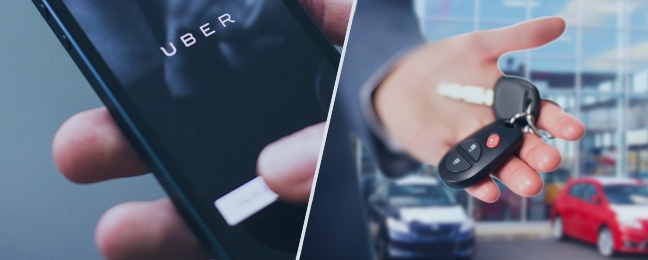

Jun 17 2016
Ride- and car-sharing are two services that have really blown up over the last few years. The ability to conveniently and affordably arrange for a ride or book a vehicle right from an application on your smartphone is too good not to catch on.
Many sources believe that ride- and car-sharing are presenting a threat to the auto industry, primarily OEM and dealership sales. Though the industry will change, they certainly are not doomed!
Here are a number of reasons why dealerships will not be destroyed by the growing popularity of ride- and car-sharing.
Ride- and car-sharing services are incredibly convenient and cost-effective for many consumers, especially those living and working in the city. They’re a great alternative or complement to public transportation, and an affordable way to travel outside of the city when the occasional need or opportunity arises.
For those who have a decent commute to work, paying for an Uber or renting a Zipcar every day would get rather expensive. And it wouldn’t be practical for busy parents who are constantly on the go between transporting their kids to school, working, and running errands in their spare time. These are just two scenarios where it wouldn’t make sense to abandon vehicle ownership.
Ride- and car-sharing is not a great alternative for everyone.
Ride-sharing drivers (Uber, Lyft, Gett, Scoop) and car-sharing providers (Zipcar, Car2go, DriveNow) will be replacing their vehicles much more frequently as they rack up many more miles than the average driver. A Deutsche Bank AG study claims that the lifecycle of these vehicles would be only three years whereas consumers keep their new vehicles for an average of 6.5 years and vehicles have an average life of 11.5 years in total.
The analysts at Deutsche Bank attribute many of these miles to what they call “empty legs” – miles driven without a passenger. They found that almost half the miles the New York City UberX drivers log are en route to pick up their next passenger.
So, while there may be fewer vehicle owners in densely populated areas, any deficit in consumer vehicle sales will be offset by the increased frequency of vehicle purchases/leases by these sharing services.
These ride- and car-sharing vehicles will still require maintenance and repairs, more frequently than the average vehicle. Dealer service departments will be in high demand, especially for the newer and more complex vehicles that mom and pop shops are not equipped to work on.
Since this is a large source of dealer revenue, the increased volume in ride- and car-sharing maintenance and repair will help balance out the decrease in vehicle purchases -- especially in cities where residents are not as vehicle-dependant and likely required little maintenance on their vehicles.
A study conducted by Kelley Blue Book earlier this year found that these sharing platforms “primarily are used as substitutes for taxis and traditional rental car companies, and have very limited impact on current or future vehicle ownership.” Though there are a number of people who no longer see a need for owning a vehicle or purchasing a new one, this study concludes that 74% of consumers polled indicated that they expected to drive themselves in the next six months. Ultimately, people have expressed that owning a vehicle still reigns supreme.
In another study conducted by the American Public Transportation Association (APTA) across 9 major cities, results concluded that ride-sharing is used in conjunction with public transit, filling in the gaps of the public transit schedule. “In every study city, a clear peak in ride-sourcing demand is visible between 10 pm and 4 am on weekends, and in the majority of cities, this is the time of greatest demand overall.” Since public transit is often not available during these hours, ride-sharing is a complementing method of transportation rather than a competitor.
From the same Kelley Blue Book study that found ride- and car-sharing to be more of a threat to taxi and rental services, 48% of the respondents stated they wouldn’t be comfortable riding alone with a ride-share driver. People like to have control of their experience, especially when riding solo. Unless this 48% of drivers want to carpool or book a vehicle from a car-sharing program every time they need a ride, owning a vehicle is the most logical option.
Based on the studies we’ve seen, dealers are not in danger of extinction due to ride- and car-sharing anytime soon. However, these kinds of services are certainly changing the landscape and can’t be ignored. Dealerships should embrace this change and become involved with these programs, or maybe even start their own vehicle sharing service --based on the expressed interest from almost a quarter of the Kelley Blue Book study respondents.
Photo credit: Mark Warner